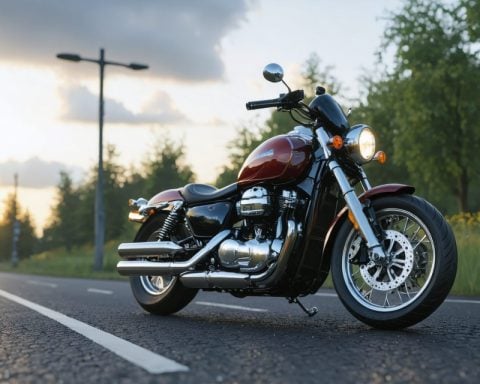In recent years, the photography world has witnessed a significant shift in consumer preference from Digital Single-Lens Reflex (DSLR) cameras to mirrorless models. This transformation has raised questions about the advantages that mirrorless technology offers over its traditional counterpart. As photographers—both amateur and professional—seek out more efficient gear, it becomes essential to explore why mirrorless cameras are increasingly becoming the go-to choice.
One of the most notable benefits of mirrorless cameras is their compactness and lightweight design. Unlike DSLRs, which have complex mirror and prism systems that add bulk and weight, mirrorless cameras rely on electronic viewfinders and digital displays. This simplicity in design allows manufacturers to produce cameras that are often significantly smaller and lighter, making them more portable. For many photographers, especially those who travel frequently or shoot on location, this portability is a crucial factor.
Technology and Performance is another key area where mirrorless cameras shine. Many modern mirrorless models boast faster and more accurate autofocus systems than traditional DSLRs. This is primarily due to the on-sensor phase detection technology found in many mirrorless cameras. Photographers benefit from quicker focusing times and the ability to track moving subjects effectively, which is essential in both sports and wildlife photography.
Additionally, mirrorless cameras often feature silent shooting modes that can be invaluable in discreet environments, such as during ceremonies or wildlife observation. The ability to capture images without mechanical noise opens doors to new photographic opportunities while avoiding disruption.
Advanced Features are also abundant in mirrorless technology. Many of these cameras come equipped with high-resolution electronic viewfinders (EVFs), which allow photographers to see a preview of the exposure and depth of field in real-time. This immediate feedback can greatly enhance the shooting experience as it provides a clearer idea of how the final image will appear. Moreover, many mirrorless systems now offer versatile video capabilities, appealing to an audience seeking to produce both still images and dynamic content seamlessly.
The ongoing evolution of lens technology also supports the mirrorless trend. Major manufacturers have recognized the shift in consumer preference and have been expanding their range of native lenses specifically designed for mirrorless cameras. This trend results in a growing selection of high-quality lenses, including wide, fast primes and versatile zooms tailored to the unique characteristics of mirrorless systems.
Lastly, battery life and usability continue to be areas of improvement. While DSLRs are known for their superior endurance when it comes to battery life, mirrorless cameras are beginning to close this gap with advancements in technology. Additionally, the intuitive design and customizable controls found in many mirrorless models cater to a wide range of user preferences, enhancing the overall shooting experience.
In conclusion, while DSLRs have long been a staple of the photography world, the advantages offered by mirrorless cameras—portability, advanced autofocus, silent operation, enhanced features, lens availability, and usability—have made them increasingly appealing to contemporary photographers. As technology continues to advance and manufacturers invest in developing mirrorless systems, it is likely that this trend will persist, bringing exciting innovations to the photography landscape. Ultimately, the choice between the two comes down to individual needs and preferences, and for many, mirrorless cameras provide an attractive and compelling alternative.
Maximize Your Photography Skills: Tips, Life Hacks, and Interesting Facts
As photography continues to evolve with the integration of mirrorless technology, it’s essential for photographers to adapt and enhance their skills. Here are some tips, life hacks, and interesting facts to help you get the most out of your mirrorless camera.
1. Master Your Camera Settings
Understanding and mastering your camera settings is crucial for capturing stunning images. Spend time familiarizing yourself with features like ISO, shutter speed, and aperture. Many mirrorless cameras offer customizable settings that allow you to create shortcuts for quick access during important shots.
2. Utilize Electronic Viewfinders (EVFs)
Take full advantage of the high-resolution electronic viewfinders commonly found in mirrorless cameras. EVFs provide a real-time preview of your shot, allowing you to adjust exposure and depth of field on the fly. This can be particularly beneficial in challenging lighting conditions.
3. Invest in Quality Lenses
With the growing array of lenses designed specifically for mirrorless systems, consider investing in quality glass. Opt for a versatile zoom lens for general use, and a fast prime lens for low-light conditions and portraiture. High-quality lenses can significantly enhance image quality and creativity.
4. Try Silent Mode
Many mirrorless cameras have a silent shooting mode that can be a game-changer in environments where noise is a concern. Whether you’re at a wedding, concert, or in nature, using this mode allows you to capture moments discreetly without disrupting the scene.
5. Experiment with Autofocus Settings
Mirrorless cameras often come with advanced autofocus capabilities. Explore different autofocus modes like single-point, wide-area, or tracking focus, which can help you adapt to various shooting scenarios, from stills to fast-moving subjects.
6. Learn About Post-Processing
Post-processing is an essential part of the photography workflow. Familiarize yourself with software like Adobe Lightroom or Photoshop to enhance your images further. Mastering these tools can transform your photos, allowing for greater creativity in the final product.
Interesting Fact: Did you know that the first mirrorless camera was introduced in 2008? It signaled the beginning of a new era in photography, and today, almost every major camera manufacturer offers mirrorless options.
7. Use a Tripod for Stability
Although mirrorless cameras tend to be lighter than DSLRs, using a tripod can still aid in achieving sharper images, especially in low-light situations or when shooting long exposures. This is particularly useful for landscape and architectural photography.
8. Optimize Battery Usage
To extend the battery life of your mirrorless camera, consider turning off Wi-Fi and Bluetooth when not needed. Additionally, using the electronic viewfinder instead of the LCD screen can conserve battery, allowing for longer shooting periods.
9. Join Photography Communities
Engage with other photographers by joining online forums or local photography clubs. Sharing your experiences and learning from fellow enthusiasts can provide valuable insights and inspiration to enhance your skills further.
10. Stay Inspired
Follow photography blogs and social media accounts that showcase mirrorless photography. Seeing what others create can spark your creativity and encourage you to explore different styles and techniques.
By implementing these tips and utilizing your mirrorless camera’s features, you can elevate your photography skills to new heights. Remember, every photographer’s journey is unique, so keep experimenting and learning!
For more in-depth photography insights, check out photography.com.


















